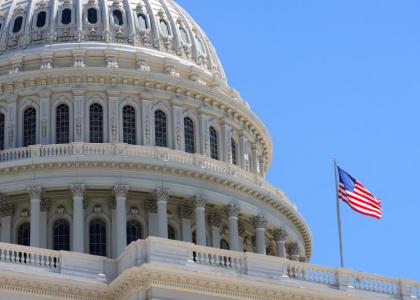Building performance standards are a key policy for meeting decarbonization goals, but because the upfront costs can be a challenge, the standards should be accompanied by sufficient financial resources and technical assistance for affordable housing.
State and local governments are increasingly turning to building performance standards (BPS) to reduce greenhouse gas (GHG) emissions and energy use in existing buildings. BPS require some existing large and midsized commercial and residential buildings—including multifamily housing—to lower their energy use intensity, GHG emissions intensity, or both.
A new report ACEEE released today outlines the unique challenges affordable housing faces with BPS compliance, such as the lack of upfront capital for energy efficiency improvements, technical expertise to complete upgrades, Read the Reportand the need to sometimes complete health and safety upgrades to properties before energy efficiency upgrades can take place. For example, some units may need roof or structural repairs before property owners can make energy efficiency improvements. Some of these challenges are compounded by a history of disinvestment in the communities where these buildings are located.
BPS have the potential to bring long-needed benefits to renters who have too often been excluded from the advantages of energy efficiency, such as lower utility bills and better indoor quality, but property owners of affordable housing face challenges which could result in negative consequences for residents as well. For example, property owners may raise rents to help pay off the costs associated with energy efficiency improvements, thus increasing housing costs for renters. Rent increases related to building upgrades could displace residents, who may already be facing housing insecurity, and result in these displaced renters moving into housing that is lower in quality than their previous unit.
Some states and local governments aim to prevent negative outcomes of BPS
To help the affordable multifamily sector comply with the standards and to prevent negative outcomes, state and local governments have adopted a few key strategies. Governments can begin with community and stakeholder engagement, which seeks to identify the concerns of the community early in the process and design the BPS around them. For example, Boston took an equity-driven approach to the process by partnering with local community-based organizations to lead the engagement.
State and local governments have also developed complementary programs to bolster financial and technical support capacity for the affordable housing sector. In Seattle, the city’s BPS stipulates the creation of a fund for decarbonization projects in affordable housing.
Some jurisdictions have limited the ability of property owners to increase rents as a result of required building upgrades. For example, in California, Chula Vista's BPS ordinance requires property owners to spread the cost of the energy efficiency improvements evenly over the entire expected lifetime of the upgrades.
Several cities with BPS have designed alternative compliance pathways to give the affordable housing sector more time and flexibility to comply. Denver allows property owners to apply for adjusted compliance schedules for reasons such as refinancing timelines that may present difficulties with funding energy efficiency investments.
Despite these strategies, more support is needed
To understand if and how these strategies were helping the affordable housing sector comply and how governments can improve on these approaches, we spoke with three organizations working in the field—the Planning Office of Urban Affairs in Boston, Energy Outreach Colorado in Denver, and Habitat NYC and Westchester in New York—to identify early insights into BPS compliance. Through our discussions with these organizations, we found that:
- The affordable housing sector needs greater amounts of financial and technical assistance. Governments and supporting stakeholders (such as energy utilities) can increase the funds available to affordable housing for BPS compliance.
- Technical assistance is needed throughout the building improvement process. Governments can help building owners by connecting them to trusted contractors, community-based organizations experienced in affordable housing improvements, and energy utilities.
- Governments need to broaden awareness and education of BPS because some building owners do not know their properties are subject to the policy.
- Greater cooperation and collaboration are needed between government, contractors, and utilities to keep the process as simple as possible for affordable housing property owners.
- Additional policies such as tenant protection, which can limit the negative effects of BPS, and electricity rate reform, which can address affordability challenges, may improve BPS compliance.
Our research found that there are still gaps in support for BPS compliance for the affordable housing sector. Moving forward, state and local governments with BPS will need to build on their efforts and offer greater financial and technical assistance, as well as education and outreach efforts. Those considering a standard can learn from existing efforts in leading jurisdictions and build in greater support for affordable housing in their policy and program designs. Improving these efforts is critical to limiting the potential for negative outcomes, ensuring that residents of affordable housing experience the benefits of BPS, and reducing buildings-related GHG emissions.



